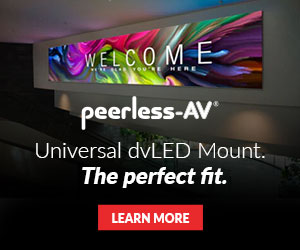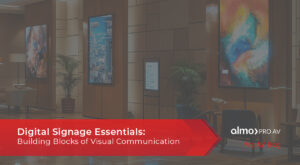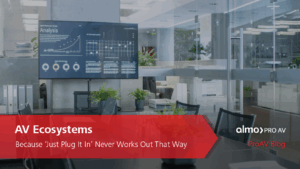Getting to Know Programming Services: A Conversation with Tom Kehr & Drew Metherall
In a recent video, Exertis Almo’s Tom Kehr, Systems Designer and Trainer, and Drew Metherall, Programming Manager, discuss different programming topics and how you can position these services to give your business an edge.
Let’s dive into their conversation with key points mentioned in their discussion.

With decades of experience, Kehr and Metherall acknowledge the long and unique history of programming in the AV industry and the complex work completed by programmers.
“There’s a user interface, be it a button panel or touch panel, and often a lot of sensors, and you’re expected to tie all this together to make the experience better for the end user,” explained Kehr.
Kehr begins the discussion with a question.
“What makes Pro AV control so different and unique from a residential system?”
 Metherall attributes this difference to the added flexibility with Pro AV control and aspects like macros, which you can build and interface with various products, sensors, temperature controls, and lighting, noting that residential universal remotes have limitations in what you can do and are more of a configurable system whereas Pro AV is actual programming of a device.
Metherall attributes this difference to the added flexibility with Pro AV control and aspects like macros, which you can build and interface with various products, sensors, temperature controls, and lighting, noting that residential universal remotes have limitations in what you can do and are more of a configurable system whereas Pro AV is actual programming of a device.
Regarding the products not distributed by Exertis Almo, Metherall explains that there are some systems that Exertis Almo will not program if they are not up to the level of necessity required in Pro AV.
When discussing the different systems, Kehr brings up the topic of certifications and training within programming.
“I held an AMX certification for 20 years. One of our programmers has a Crestron Silver Level. Our new programmer coming has a Platinum Level. We all hold certifications in Extron, we’ve gotten most of our certification for Q-SYS,” Metherall said. “And if we don’t have [a certification], we’re getting there.”
Kehr elaborates on Metherall’s point, explaining that there is always room for ongoing training.
 Kehr and Metherall then discuss the advantages of using Ethernet for an audio-visual control system, explaining that although there are some challenges when mixing audio, video, and control on the same network, you can have a low voltage network company to come in to do all the wiring, since it’s all network, simplifying installation.
Kehr and Metherall then discuss the advantages of using Ethernet for an audio-visual control system, explaining that although there are some challenges when mixing audio, video, and control on the same network, you can have a low voltage network company to come in to do all the wiring, since it’s all network, simplifying installation.
Another challenge exists in making changes to an existing control system, as many control files are compiled files. Kehr and Metherall explain that if the client has the original code, or they are willing to invest in a rewrite, Exertis Almo can do that work.
“During an installation, we see the bill of materials, and we have a system schematic or a flow diagram,” Kehr said. “What other documentation do you need as you begin to put the program together?”
In response, Metherall explains that he usually requires a Scope of Work or a Programming Narrative. We typically need a Bill of Materials and a signal flow. While Exertis Almo does not need all these just to do a quote, but once we get into the work, we definitely want all that information.
Kehr mentions that a lot of programming work is event-driven and poses the question, “What can you incorporate into a system for easier use?”
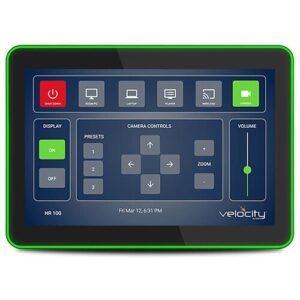 Metherall notes that most programmers utilize a video sync signal off some of the digital or Ethernet-based video transmitters. “We can take that signal and have the system turn on and route to that source without having to even touch a button,” he said.
Metherall notes that most programmers utilize a video sync signal off some of the digital or Ethernet-based video transmitters. “We can take that signal and have the system turn on and route to that source without having to even touch a button,” he said.
Metherall elaborates, explaining that many programmers also use sensors on touch panels. Additionally, timers are a frequent addition to a system, allowing the system to turn off after a certain time or turn on at a prescribed time.
Kehr and Metherall also discuss decreased incorporation of voice assistance, acknowledging that these capabilities, like Siri or Alexa, are more present in residential systems.
The duo concludes their conversation by encouraging listeners to learn more by attending the industry-leading expo, E4 Experience.
The discussion offers a detailed look into the world of Exertis Almo Programming Services, with valuable insight on how to expand your reach. Watch the full conversation on YouTube.
If you learned something from this blog and video, you may also enjoy learning how to “Grow Your Business and Expand Your Reach – A Guide to EA’s Commissioning Services” blog.



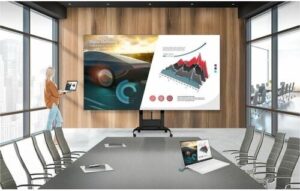 Constructed with an embedded controller and built-in speaker, LG’s lineup of All-In-One Displays eliminate the idea that LED displays are complicated to install. With wireless screen sharing, the LAEC Series is compatible with LG One:Quick Share, allowing a user to share their screen from their device to the display. Plus, the Magic Remote allows users to select and run the menu of the signage using a mouse, with the cursor used as a laser pointer. Additionally, the remote features a “FREEZE” button, to temporarily freeze the screen while switching the content, therefore limiting meeting distractions.
Constructed with an embedded controller and built-in speaker, LG’s lineup of All-In-One Displays eliminate the idea that LED displays are complicated to install. With wireless screen sharing, the LAEC Series is compatible with LG One:Quick Share, allowing a user to share their screen from their device to the display. Plus, the Magic Remote allows users to select and run the menu of the signage using a mouse, with the cursor used as a laser pointer. Additionally, the remote features a “FREEZE” button, to temporarily freeze the screen while switching the content, therefore limiting meeting distractions. Hotels are often a go-to location for sales meetings and corporate events, so it’s important to prioritize guests and their devices. With Nonstop wireless charging technology, meeting attendees can efficiently charge their devices, without searching for wall outlets scattered across the room.
Hotels are often a go-to location for sales meetings and corporate events, so it’s important to prioritize guests and their devices. With Nonstop wireless charging technology, meeting attendees can efficiently charge their devices, without searching for wall outlets scattered across the room.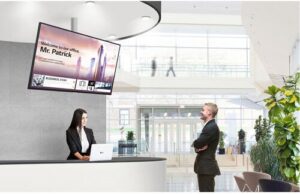 Wayfinding Made Simple
Wayfinding Made Simple Of course, they have to keep up with product changes and technological advancements to offer good recommendations to you or me. Yes, they can research the details, although your best sales professionals are ahead of the curve. They want to be the ones to introduce the technology to you to be a true consultant in offering you the solutions. That’s their value, and they know it!
Of course, they have to keep up with product changes and technological advancements to offer good recommendations to you or me. Yes, they can research the details, although your best sales professionals are ahead of the curve. They want to be the ones to introduce the technology to you to be a true consultant in offering you the solutions. That’s their value, and they know it!


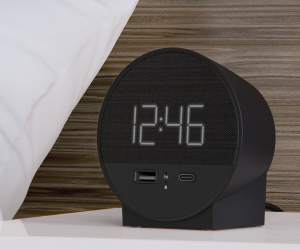
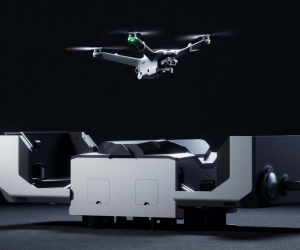

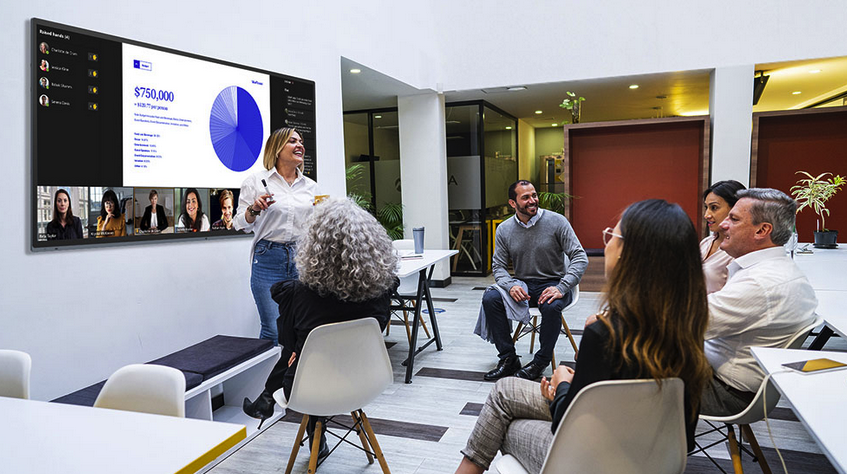
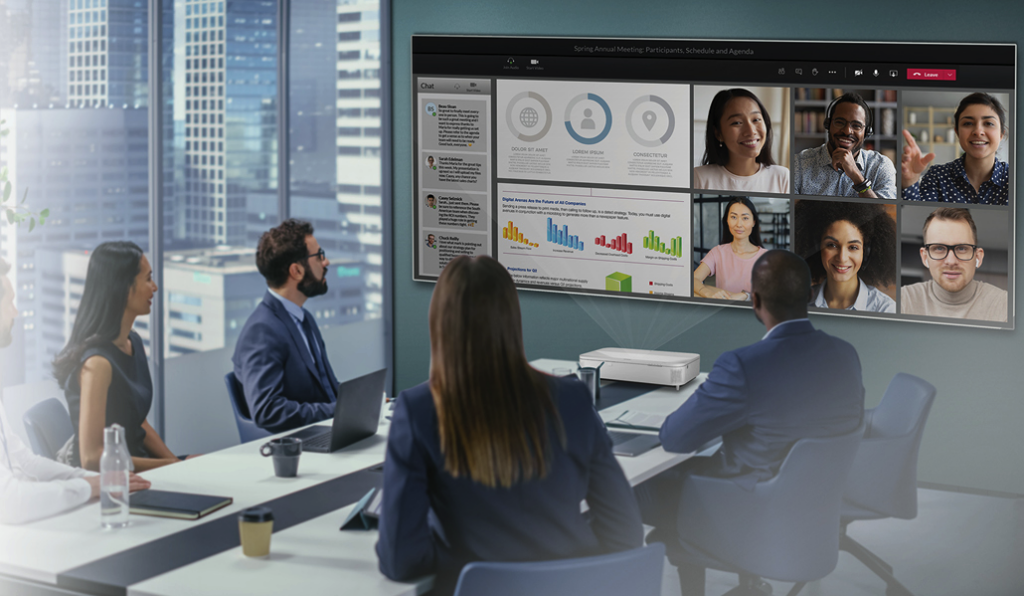
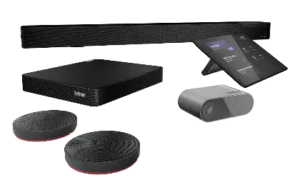 AI-powered cameras and microphones, such as those offered by
AI-powered cameras and microphones, such as those offered by 